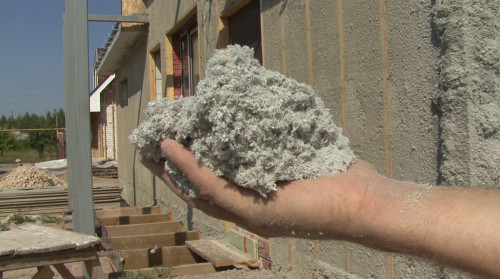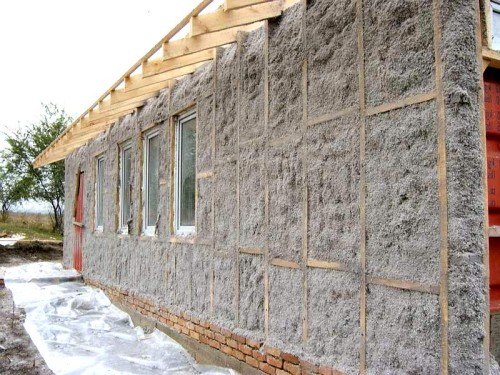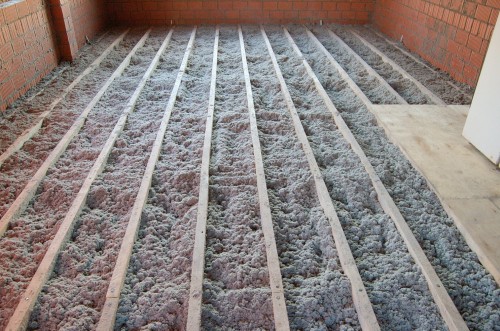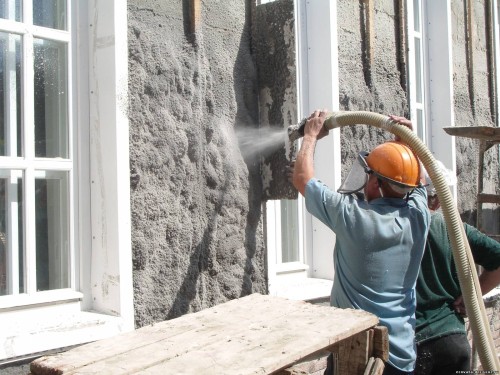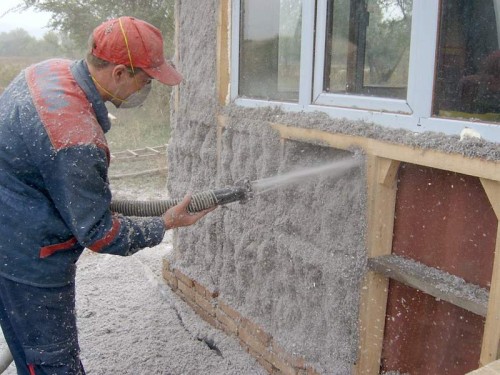
Warming at home Eco-friendly Construction
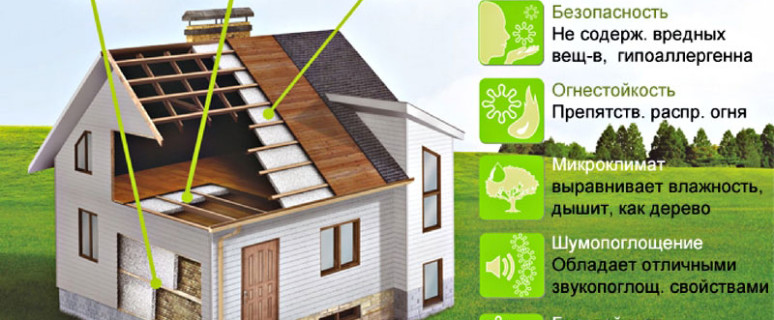
Due to the constant increase in energy prices, each homeowner thinks about conducting thermal insulation work. Now there are many options. One of the most optimal solutions will be the warming of the house of Eco-art.
Content
Product specifications
Equata consists of four main components:
- cellulose fibers;
- boric acid;
- borants;
- lignin.
Due to the presence of cellulose fibers, which are a recycled paper waste paper, a homogeneous layer is created without a seam. But the fact is that the use of one cellulose in construction is unacceptable because it is easily destroyed and is a fire-hazardous material.
Therefore, the heat-insulating material included a boor and boric acid. The first substance is an excellent flame retardant who will not allow the ignition of Eco. The only nuance is that using a drone insulation is prohibited in chimneys and heating boilers.
Boric acid has antiseptic properties. This component saves an eco-house inside the house from fungi, mold and rodents. The presence of lignin guarantees a more reliable grip of the heat-insulating material with the surface.
Eco-meat is a bulk material that is sold in briquettes. Before use, the insulation must be pulled out, as a result of which its volume will increase by 3-4 times.
In addition to excellent thermal insulation properties, the EcoWhat is characterized by:
- low air permeability;
- good sound insulation;
- low chemical activity (when contacting with metallic elements of corrosion design is not observed);
- the lack of smell and toxic substances (during operation does not evaporate the boos and boric acid);
- the possibility of reuse of material waste;
- filling out all the insulated space without emptiness (which makes it impossible to appear cold bridges).
The heat insulation material dry pretty quickly if moisture falls on it. And after drying, it does not lose its initial operational qualities. Therefore, the insulation of an eco-art wooden house is the most appropriate solution. It is the insulation with such properties that will create the most optimal level of humidity in residential areas.
Among the disadvantages of applying, EcoWhat should be noted:
- the need to purchase / lease special equipment (pump and components for it, a tower, a receiver bunker);
- conducting permanent control when laying the material (due to the shrinkage of the insulation);
- a decent amount of dust (if dry installation technology is used);
- invalidness of the heat insulation of overlaps, which are located above the basement.
Warming at home is an eco-water outside and indoors can be carried out:
- manually;
- mechanized method.
In turn, the mechanized type of insulation laying is divided into such material installation methods:
- dry;
- wet;
- wet glue.
Manual method
This method differs from mechanized laying by a longer period of operation and a slightly large equity flow. The main advantage of the manual method is the minimum cash costs. Scope of application - walls, gender and overlap, which are filled from the second floor.
Warming with their own hands at home is an eco-art providing for the following actions:
- the contents of the briquette is poured into the cooked large capacity;
- with the help of a drill equipped with a paint removal nozzle, an eco-water is fluffy;
- the insulation is evenly distributed between lags on the floor or roofing rafters.
When the floor insulation, an eco-water surface is covered with the creation of a small slide. When installing the finishing floor covering, the heat-insulating material will be subsequently compact.
If the warming of vertical structures is insulated, then the eco-friendly is tram. The density of the material must be 2-3 times less initial.
Mechanized type of laying
The insulation of an eco-handed frame house with a mechanized method is characterized by:
- rapid work;
- economical flow rate;
- the minimum number of errors associated with the human factor.
Dry fashion
This technology is used for thermal insulation:
- closed spaces in the wall;
- inter-storey overlap;
- frantic design;
- horizontal and inclined surface.
The process of thermal insulation of the surface consists of such steps:
- at the highest point, a hole is made;
- the sleeve is inserted into it;
- ecurates are received with air in the sleeve;
- the insulated space is filled with material that covers all the slots;
- the hole is closed with a decorative element.
Eco density should be 45-50 kg / m³ with horizontal surface filling and 65-70 kg / m³ with a vertical distribution of material.
Wet method
It is used when insulating an open vertical space and wall walls. The moistened material is characterized by the fact that without problems sticking to the wall. And it does not matter, the surface is made from what material. This is due to the fact that the EcoWat contains lignin. When moisture, lignin acquires the maximum stickiness.
Application technology is a wet way:
- device crates from galvanized profiles or wooden bars;
- filling in the insulation of intercrowl space with pneumatic equipment;
- wetting with water outlet pipe from which the material is entered;
- creating a solid layer of insulation, an impetusted deformation (should not be emptiness and cracks);
- cutting the excess material (if necessary, the trimmed insulation can be dried and reused).
Wet-glue
The main difference from the wet method is that adhesive components are added to the eco-engine. As a result, adhesive properties and the elasticity of the insulation increase. This technology is used for thermal insulation of the ceiling, complex surfaces, hanging and thin-walled structures.
It should be noted that with the highest possible arrangement of cellulose fibers, with a vertical spray, there is no emotion to the insulation shrinkage. The incarnation of this feature will retain the technical characteristics of the material throughout the entire operational period.
Useful advice
Filling an eco-art space between lags should be without excessive seal. Otherwise, this will lead to a decrease in the thermal insulation properties of the material. For effective floor insulation, inter-storey or attic overlap, the thickness of the insulation should not exceed 0.2 m.
After thermal insulation work, several days must pass. This is due to the fact that the lignin contained in the eco-room, when interacting with a wet medium, creates a crust on a heater with a thickness of up to 5 cm. This crust improves material thermal insulation.
Facing a surface insulated with an emotory should be performed without damaging the top layer of the material. Between thermal insulation material and finishing, it is recommended to put paper. This will reduce the amount of dust when pressing the insulation.
An ordinary garden vacuum cleaner is quite suitable as equipment for spraying. Its certain part should be disconnected, and the terminals from this part to rearrange on the work part. No need to use too long pipe, because the power of the vacuum cleaner will decrease.
Tissues near the dust collector should be removed by pliers. Otherwise, Ekwata will be sweeping on them. The corrugated hose additionally connects with the hole of the dust collector using the tape. To prevent the appearance of dust, the hose itself is shaking with a cloth.
Video about the insulation of the house of Eco-Way:




